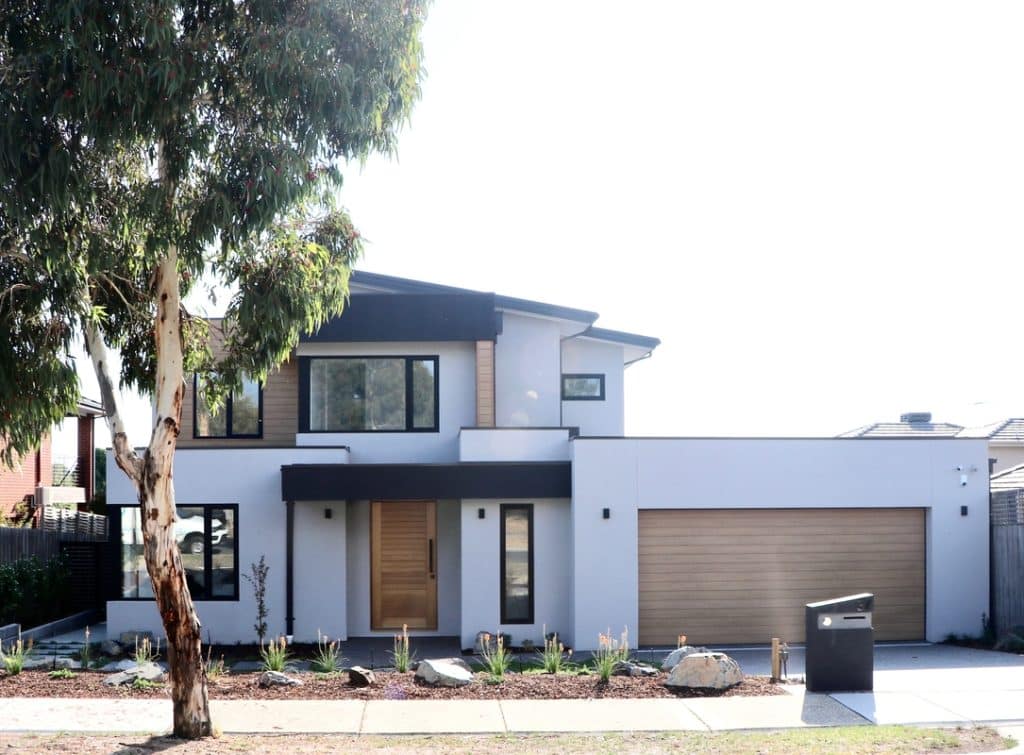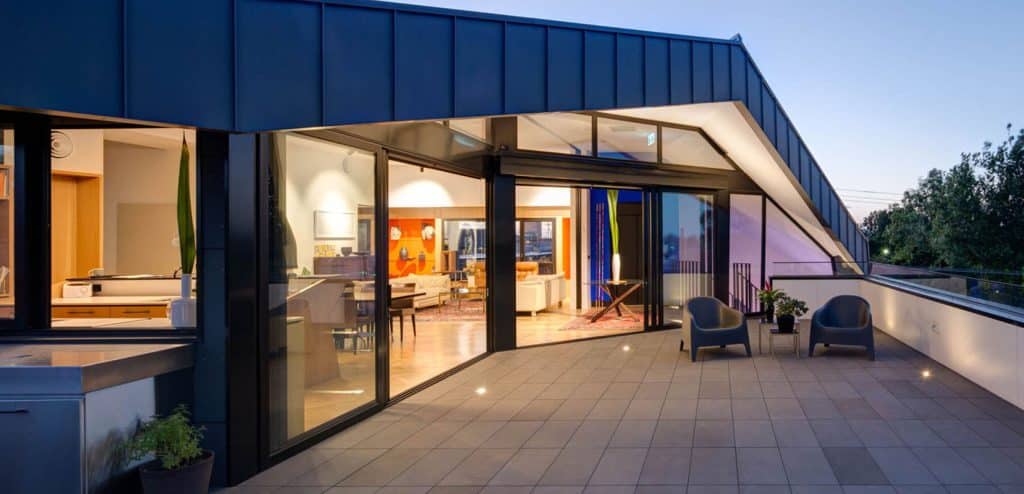Why Secondary Glazing Blocks Noise Better Than Double Glazing
Secondary glazing can block more noise than standard double glazing due to its fundamentally different design. Unlike double glazed products, where two panes are factory-sealed with a small air gap, secondary glazing involves fitting an additional glazed panel (glass, acrylic, or polycarbonate) inside the existing windows and doors, creating a larger, customisable air gap between independent layers. This significantly enhances sound insulation.
When installed correctly, secondary glazing reduces noise transfer by up to 80%, outperforming many double glazed products, especially in urban areas where external commotion levels are high.
Comparison table:
Feature | Double Glazing | Secondary Glazing |
Noise Reduction | Good | Superior |
Typical Air Gap | 6-20mm | 50-150mm |
Glass Vibration Isolation | Single sealed unit | Independent glazed panels |
Cost | Higher | More cost effective |
Preserves Original Windows | No | Yes |
Energy Efficiency | High | High |
Secondary glazing creates independent sound barriers, resulting in better acoustic insulation without altering the original aluminium or timber frame of your windows and doors.
How Secondary Glazing Works to Soundproof Your Home
Secondary glazing works by adding a new glazed acrylic, polycarbonate, or glass panel inside, parallel to the existing windows and doors. This forms a second layer or sheet that traps air between two independent panes of glass, polycarbonate, or acrylic.
The independent vibration of each pane prevents sound waves from passing directly through, disrupting their transmission. The larger air gap functions as an acoustic buffer zone. Installing secondary glazing transforms single glazed products into highly effective sound barriers without replacing a single aluminium or timber frame, window, or door.
Secondary glazing systems typically consist of:
- A glazed panel: acrylic, polycarbonate, or glass
- Window frame fittings: aluminium or timber
- High-quality seals around the edges
The sealed air gap between the existing windows and doors and the new panel plays a critical role in sound insulation. This is why, compared to DIY, professional fitting of secondary glazing ensures maximum noise reduction. Contact Winsulation today for expert glazing services trusted Australia-wide!
The Ideal Air Gap for Maximum Noise Reduction
Air gap size is a key differentiator between double glazed windows, doors, and secondary glazing when it comes to noise reduction. Standard double glazed products offer air gaps between 6mm to 20mm, limiting their acoustic potential.
Secondary glazing, however, can accommodate much larger gaps:
- Minimum recommended air gap: 50mm
- Optimal air gap for maximum noise reduction: 100mm or greater
- Practical maximum: 150mm, depending on the size of your windows, doors, and available space
Why this matters:
- Larger gaps disrupt more sound frequencies, particularly low-frequency sounds from traffic or aircraft.
- Independent panes reduce resonant vibrations.
A properly sized air gap improves both thermal insulation and acoustic performance. Retrofitting secondary glazing with a large air gap behind an existing single glazed product significantly reduces external noise and improves comfort.
Glass Thickness Tips: Block More Noise with the Right Glass
The thickness of the secondary glazed panel contributes directly to noise reduction performance. To maximise sound insulation, varying the glass thickness between your existing windows or doors and the second panel is advised.
Recommended thickness guidelines:
- Standard glass: 4mm to 6mm (suitable for general suburban sound reduction)
- Laminated glass: 6.4mm for enhanced acoustic insulation and security
- Acrylic panels: 6mm to 10mm for lightweight yet effective solutions
Using laminated glass in your secondary glazing provides better, superior acoustic dampening due to the interlayer film that interrupts sound vibrations.
The correct glass. polycarbonate, or acrylic panel thickness, combined with a large air gap, ensures that secondary glazing functions as a great, high-performance soundproofing solution.
Professional Installation: Essential for Best Noise Reduction
While DIY secondary glazing kits are available, professional installation delivers better results for both acoustic and thermal insulation. The process involves:
- Accurate measurement of each door and window frame
- Custom fitting of glazed panels
- Precision sealing to eliminate air leaks
Professional installers maximise the air gap possible within each window or door reveal and ensure the secondary glazing system integrates seamlessly with your existing windows and doors. Proper fitting secondary glazed products prevents sound leakage around the panel edges, which is critical for performance.
In addition to optimising noise reduction, professional service minimises disruption to your home during installation.
Simple DIY Ways to Boost Your Secondary Glazing Performance
While professional installation delivers the best results, many homeowners are exploring DIY options to enhance their existing secondary glazing or create removable panels for seasonal use. Using materials like a polycarbonate sheet, an acrylic sheet, and lightweight aluminium frames, it’s possible to craft effective supplementary solutions that improve both noise reduction and thermal insulation.
Magnetic panels are particularly popular in DIY secondary glazing projects. By applying magnetic strips around the door or window reveal and creating a clear panel from polycarbonate or acrylic sheet, you can easily install and remove the second layer as needed—perfect for renters or those seeking temporary upgrades. This approach allows for strong contact around the frame, limiting sound leaks and improving energy efficiency.
When building your own panels, consider using:
- A polycarbonate sheet for strength and impact resistance, especially for large panels.
- An acrylic sheet for lightweight, budget-friendly options.
- Aluminium frames for structure and durability without excess weight.
DIY secondary glazing using these materials may not fully match professional acoustic standards, but can still significantly reduce external noise, particularly when used alongside existing glazed products. Adding a magnetic attachment system makes it practical to remove panels during warmer months or for door and window cleaning, while maintaining a tight contact seal when in place.
Whether you’re supplementing your current system or building from scratch, a DIY secondary glazing project using quality sheet products and simple aluminium frames offers a cost-effective way to improve home comfort. If you’re unsure where to start, contact Winsulation for guidance, or explore ready-to-install secondary glazing kits designed for DIY enthusiasts.
Secondary Glazing Benefits: Quieter, Warmer, More Energy Efficient Homes
Secondary glazing offers multiple benefits beyond noise reduction:
- Reduces external sound transfer by up to 80%
- Cuts heat transfer by up to 70%, reducing heat loss in winter
- Lowers cooling demands in summer, helping to reduce power bills
- Preserves original door and window frames and aesthetics
- Improves home security when laminated or thickened panels are used
Secondary glazing transforms single glazed windows and doors into energy-efficient, soundproof systems without requiring full replacements.
Key benefits summarised:
- Quieter living spaces
- Improved thermal insulation
- Energy savings on heating and cooling
- Maintained home appearance
- Enhanced property value
These advantages make it a great, highly effective solution for homeowners seeking quieter, warmer, and more energy-efficient homes.
Preserve Original Windows While Reducing Outside Noise
Secondary glazing preserves your home’s original windows and doors, making it ideal for heritage properties or homes where door and window replacement is impractical or undesirable. The system is fitted discreetly on the interior side of the frames.
Because secondary glazing systems are designed to retrofit existing windows and doors:
- No external alterations are required
- Original sashes, sliders, or casements remain fully operational
- Character and appearance of windows and doors are preserved
This allows homeowners to reduce noise and heat transfer without compromising the aesthetic integrity of their property.
Secondary glazing is particularly useful for:
- Heritage-listed homes
- Apartments with body corporate restrictions
- Period homes requiring modern energy upgrades
Retaining existing windows and doors while improving comfort and energy-efficiency makes secondary glazing a great strategic solution for Australian homeowners.
Is Secondary Glazing Cheaper than Double Glazing? (And Why It Might Be Better)
Secondary glazing is generally more cost effective than replacing windows and doors with double glazed units. This is because secondary glazing involves installing an additional acrylic, polycarbonate, or glass panel within the existing door or window frame, rather than removing and replacing entire units.
Cost advantages include:
- No demolition or rebuilding around windows and doors
- No disposal of existing windows and doors
- Reduced installation labour time
Depending on door and window sizes and specifications, this type of glazing typically costs around one-third to half of the price of high-quality double glazing.
Why secondary glazing can be a better solution:
- Superior noise reduction due to larger air gap
- Retains the original door or window structure
- Minimal disruption during product installation
- Comparable thermal insulation to double glazed windows and doors
Secondary glazing serves as a practical alternative to double glazing for homeowners prioritising acoustic insulation and energy savings without the higher costs and invasive installation associated with full door or window replacement.
Secondary Glazing: The Ultimate Soundproofing Solution for Busy Streets
For homes located near main roads, schools, airports, or noisy neighbours, secondary glazing is the most effective retrofit solution for blocking external noise.
Its superior acoustic performance is due to:
- Large customisable air gap
- Independently vibrating glass layers
- Flexibility to use thicker or laminated panels
- Enhanced sealing compared to standard double glazing
Secondary glazing enables homeowners to enjoy a peaceful, energy efficient living environment, even in densely populated or high-traffic areas. By reducing noise by up to 80% and lowering energy consumption, this offers an effective long-term investment in home comfort.
Whether installed in bedrooms, living spaces, or home offices, secondary glazing provides reliable soundproofing, energy efficiency, and preservation of your home’s original character.
For those seeking a cost-effective, high-performance alternative to double glazing that prioritises noise reduction, secondary glazing is the optimal solution.
Contact us and request a free quote today to discover how Winsulation’s secondary glazing solutions can transform your home.



